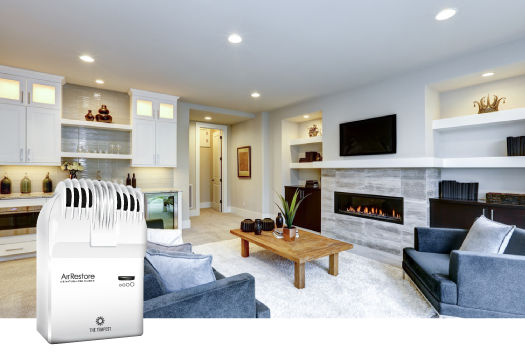Apr 24th 2024
Clearing the Air: Common Indoor Air Pollutants and How to Remove Them
Indoor air quality is a significant concern for homeowners and office managers alike. While the outdoor air quality often grabs headlines, the air inside our homes and workplaces can be more polluted due to a concentration of pollutants in confined spaces. From common allergens like pollen and pet dander to harmful chemical vapors, understanding and combating indoor pollutants is essential for maintaining a healthy environment. This article explores common indoor air pollutants and discusses innovative solutions like the AirRestore Air Purifier to improve air quality, reflecting the ethos that while Mother Nature may be the original air naturalizer, AirRestore is proud to be her indoor helper.
Understanding Indoor Air Pollutants
Indoor air pollutants range from biological particles like molds and pollen to harmful chemical emissions from furniture, cleaning products, and even building materials. Identifying these pollutants is the first step toward a cleaner indoor atmosphere.
The Impact of Indoor Air Quality on Health
Poor indoor air quality can lead to a range of health problems, from minor irritations such as headaches and fatigue to more severe effects like respiratory diseases and, in some cases, even cancer. Understanding these impacts can motivate improvements in indoor air management.

Natural Air Purification with AirRestore
The AirRestore Air Purifier leverages a technology inspired by nature's own methods of air cleaning. Unlike traditional air purifiers, AirRestore's system actively works to break down pollutants on a molecular level, mimicking the natural outdoor air cleansing processes indoors.
Strategies to Reduce Indoor Pollutants
Minimizing the sources of indoor pollutants is a practical approach to improving indoor air quality. This includes routine activities such as proper ventilation, choosing natural cleaning products, and controlling humidity levels inside buildings.

Improving Ventilation to Enhance Indoor Air Quality
One of the most effective ways to reduce indoor air pollution is by improving ventilation. This helps to dilute pollutants inside and bring in fresh outdoor air, which can be particularly effective when combined with a system like AirRestore.
Maintaining Optimal Humidity Levels
Maintaining indoor humidity within a healthy range not only supports overall comfort but also prevents the growth of mold and the proliferation of dust mites, both of which are common indoor pollutants.
Choosing the Right Air Purification Technology
Selecting the right air purification technology is critical. AirRestore offers a unique approach by not relying on traditional filters or UV lights, which can sometimes emit harmful byproducts and require frequent maintenance.
Improving indoor air quality is essential for health and well-being. By understanding common indoor pollutants and employing effective strategies like those offered by AirRestore Air Purifier, households and businesses can significantly enhance their living and working environments. Remember, while nature cleans the air outdoors, AirRestore can do the same for the indoors.

